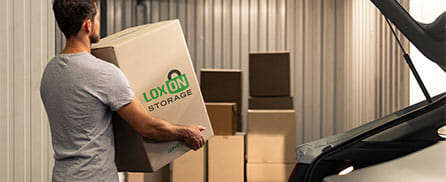Apr 18 2024
Your Guide To Wine Storage
Whether you are a wine connoisseur or just starting your wine collection, mastering the art of wine storage can lead to improved flavour and freshness over time. If you are looking to build up an at-home wine rack or cellar wine like a pro, our comprehensive wine storage guide has all the details you need to know to savour every last drop.
How Long Does Wine Last Unopened?
Before beginning to store wine, it is important to learn how long wine lasts depending on type and classification. This ensures you can make the most of your collection and avoid sipping on any spoiled wines.
Typically, unopened bottles of red and white wine can last decades if stored correctly. Top-quality wines tend to have a longer shelf life as they tend to contain higher levels of sugar, acidity, tannin or lower alcohol content.
However, a good rule of thumb is red wines can last from 3 to 5 years whilst white wines last less at an average of 1 to 2 years.
For more details on specific wines, explore our table:
| Wine Type | How Long It Lasts In Storage |
|---|---|
| Red Wine | |
| Port | 30 to 40 years |
| Cabernet Sauvignon | 7 to 10 years |
| Merlot | 3 to 5 years |
| Shiraz | 3 to 5 years |
| Pinot Noir | 5 years |
| Grenache | 3 to 5 years |
| White Wine | |
| Chardonnay | 2 to 3 years |
| Pinot Grigio | 1 to 2 years |
| Riesling | 3 to 5 years |
| Sauvignon Blanc | 18 months to 2 years |
| Semillon | 10 to 15 years |
| Pink Wine | |
| Rose | 2 to 3 years |
| Moscato | 3 to 5 years |
How To Store Wine?
From cellars to wine rooms, wine racks, bar carts, closets, wine fridges and even self-storage units, there are many ways you can store wine. What works best for you will depend on personal preference, budget and what wine you are storing.
However, regardless of the storage space you choose, any effective wine storage depends on four main factors: temperature, humidity, light and vibration.
Maintain a consistent temperature:
One of the main things you may hear about when it comes to wine storage is to keep your storage space at a consistent temperature. This is because warm spaces can impact the wine aging process, flavour profile and quality. Correct temperature regulation can help to prevent oxidation, maintain the wineâs structure, help it age properly, prevent heat damage and spoilage.
It is recommended to store wine between 14 to 18 degrees at a consistent temperature in a dark space. Avoid areas that can be exposed to the elements or experience temperature fluctuations or such as backyard sheds, garages, fireplaces, top-level cabinetry and direct sunlight.
Keep humidity steady:
Whilst modern wines are often sealed with a screwcap, top-shelf wines can come with a cork. For corked wines, it is recommended to maintain a humidity level of 50%-60% in the wine storage spot. This is because higher levels of humidity can cause mould or mildew, whilst lower levels of humidity can cause the cork to dry out, shrink and oxidise the wine.
High humidity levels can also damage the packaging, labels or wine bottle box in storage. Where you can help it, it is best to keep humidity consistent.
Use a dark and moody storage space:
When asked to picture a wine cellar you may instantly think of an underground room filled with stone walls or wood. But did you know this is done for a specific reason?
Wine should be stored in a dry and dark place for the most effective preservation. This is because light (particularly UV light) reacts with the compounds in the wine and quickens the aging process causing it to develop characteristics typically found in older wines. However, because of this fast-tracked aging process, the wine can lose its balance and complexity which leads to an undesirable flavour and aroma.
On top of the flavour of the wine, light exposure can impact the bottle and its packaging such as degrading corks, oxidising the wine, wine spoilage, label damage and more.
A self-storage unit is a great option for wine storage as it can stay dark and dry. This can preserve the wine flavour and aroma, prevent aging, maintain bottle integrity and preserve the bottle appearance.
Do not shake the bottle:
Something you may not think of when considering wine storage is vibration. However, it can have an impact on the wine in a variety of ways. Firstly, it can disrupt the sediment that sits at the bottom of the bottle and mix it with the wine, impacting its clarity, taste and texture.
Disturbing the wine bottle can also introduce air into the wine which can accelerate the oxidisation process and alter the flavours and aroma. This can lead to a wine that tastes full, flat or unpleasant.
Shaking the wine bottle can increase the pressure inside the wine bottle too. Particularly if the wine is carbonated or the cork is not sealed correctly. This can lead to leaks over time or even popping the cork out and opening the bottle accidentally which can cause spillage.
So, when storing your wine ensure that you do not disrupt the bottle in transit or whilst in storage. Keep it in a stable place without lots of noise or disruption from movement such as a self-storage unit or dedicated wine cellar.
Store wine on its side:
Ever considered why wines are always stored or displayed on their side? This is because the side-on position can keep the cork from becoming dry over time and stop air from seeping into the bottle leading to oxidation and spoilage.
It also makes the wine easier to decant when you are ready to enjoy your wine. Storing the wine horizontally can allow the sediment to settle along the side of the bottle which makes serving the wine easier as the sediment can often be left behind when pouring.
How To Pack Wine for Storage?
When packing your wine for storage, it is recommended to use wine boxes designed for specifically transporting wines. At Loxon Storage, we have dedicated wine bottle storage boxes in our âBox Shopâ and available onsite at all facilities.
On top of this, pack your wines by adding bubble wrap around each bottle for added protection from temperature fluctuations whilst in transit.
Once the bottles are wrapped, place them horizontally into the storage box. Be sure to fill empty space in the storage box with bubble wrap, foam or towels to prevent the wines from moving around whilst in transit to your storage location.
At Loxon Storage we have a variety of self-storage units available, with the perfect dark and dry space to store your wine collection. Be sure to contact our team today to learn more or enquire at your nearest Loxon Storage facility.
How To Store Wine Summary:
- Store at a consistent temperature (recommended is 14-18 degrees)
- Store at a consistent humidity level (recommended is 50-60% humidity)
- Store in a dark and dry space
- Store wines in a space with no vibration
- Store wine horizontally
How To Pack Wine for Storage Summary:
- Use wine boxes with separators
- Wrap each wine bottle in bubble wrap
- Place horizontally in the wine storage box
- Fill any empty spaces or gaps with towels, foam or extra bubble wrap
- Buckle into the car for safe transport or pack tightly into the vehicle
About The Author:
Loxon Storage, formerly Fort Knox Storage, is a family-owned and operated storage business based in Queensland Australia. With decades of experience and expertise in personal storage and commercial storage, Loxon Storage is a trusted source on any storage topic. Learn more about Loxon Storage by visiting our About Us page.




